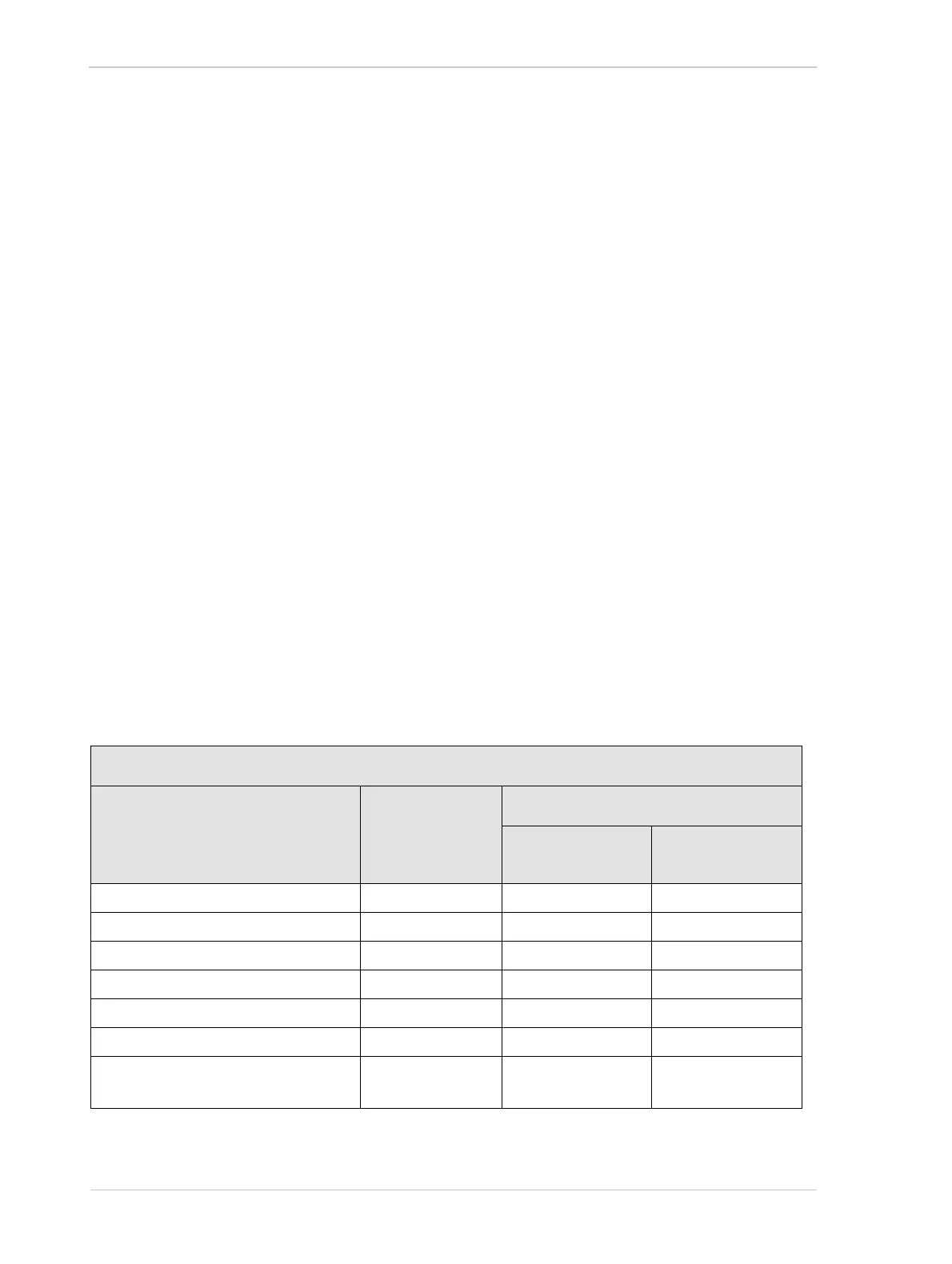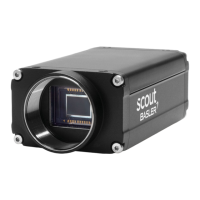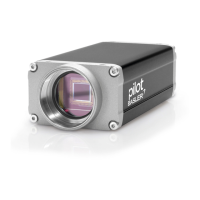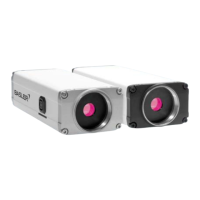Image Acquisition Control AW00089317000
148 Basler ace GigE
7.11 Acquisition Timing Chart
Figure 81 shows a timing chart for frame acquisition and transmission. The chart assumes that
exposure is triggered by an externally generated frame start trigger (ExFSTrig) signal with rising
edge activation and that the camera is set for the timed exposure mode.
As Figure 81 on page 150 shows, there is a slight delay between the rise of the ExFSTrig signal
and the start of exposure. After the exposure time for a frame acquisition is complete, the camera
begins reading out the acquired frame data from the imaging sensor into a buffer in the camera.
When the camera has determined that a sufficient amount of frame data has accumulated in the
buffer, it will begin transmitting the data from the camera to the host PC.
This buffering technique avoids the need to exactly synchronize the clock used for sensor readout
with the data transmission over your Ethernet network. The camera will begin transmitting data
when it has determined that it can safely do so without over-running or under-running the buffer.
This buffering technique is also an important element in achieving the highest possible frame rate
with the best image quality.
The exposure start delay is the amount of time between the point where the trigger signal
transitions and the point where exposure actually begins.
The frame readout time is the amount of time it takes to read out the data for an acquired frame
(or for the acA750, an acquired field) from the imaging sensor into the frame buffer.
The frame transmission time is the amount of time it takes to transmit an acquired frame from the
buffer in the camera to the host PC via the network.
The transmission start delay is the amount of time between the point where the camera begins
reading out the acquired frame data from the sensor to the point where it begins transmitting the
data for the acquired frame from the buffer to the host PC.
The exposure start delay varies from camera model to camera model. The table below shows the
exposure start delay for each camera model:
Exposure Start Delay
Camera Model Global Shutter
Rolling Shutter
ERS Mode
(Default)
GRR Mode
acA640-90gm/gc 21.48 µs - -
acA640-120gm/gc 17.62 µs - -
acA645-100gm/gc 21.84 µs - -
acA750-30gm/gc 48.97 µs - -
acA780-75gm/gc 24.50 µs - -
acA1280-60gm/gc - 190 to 200 µs (*) -
acA1300-22gm/gc
acA1300-30gm/gc
34.50 µs - -
Table 20: Exposure Start Delays

